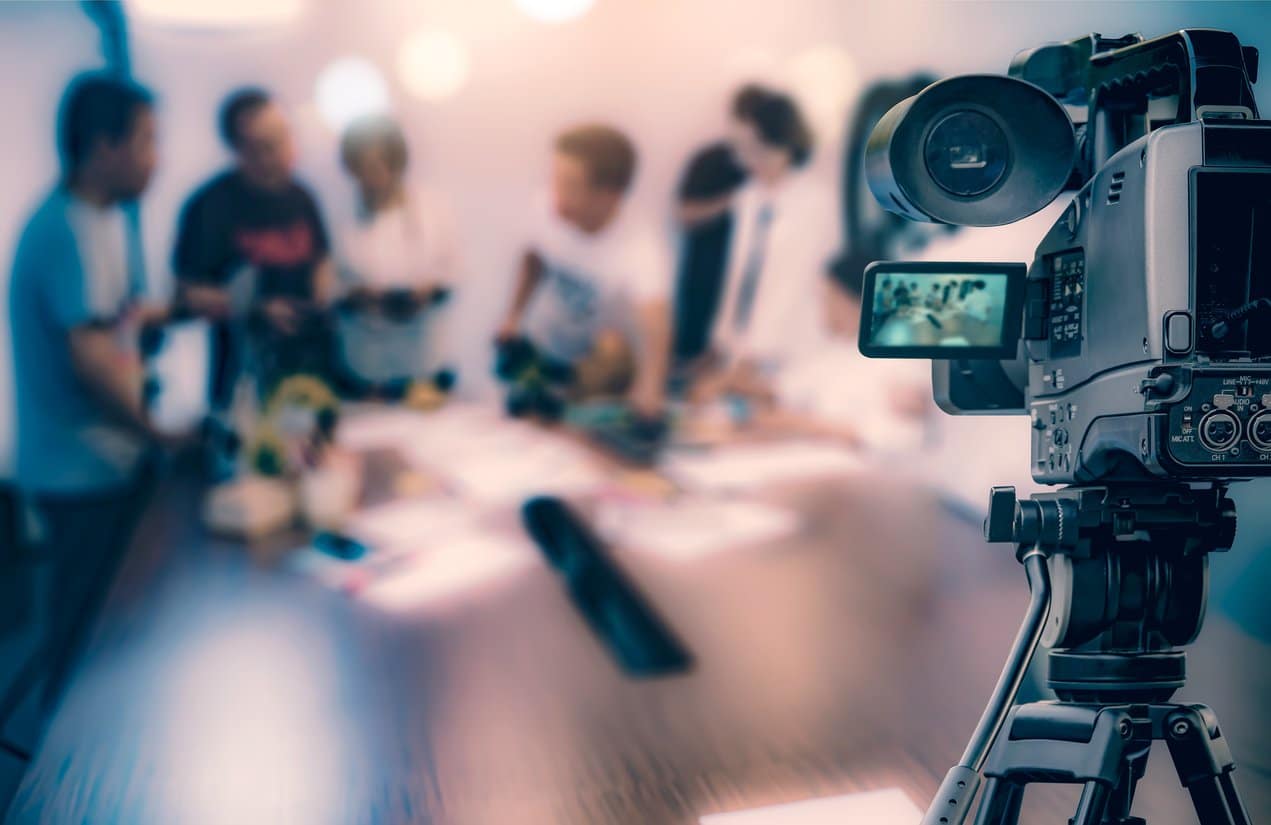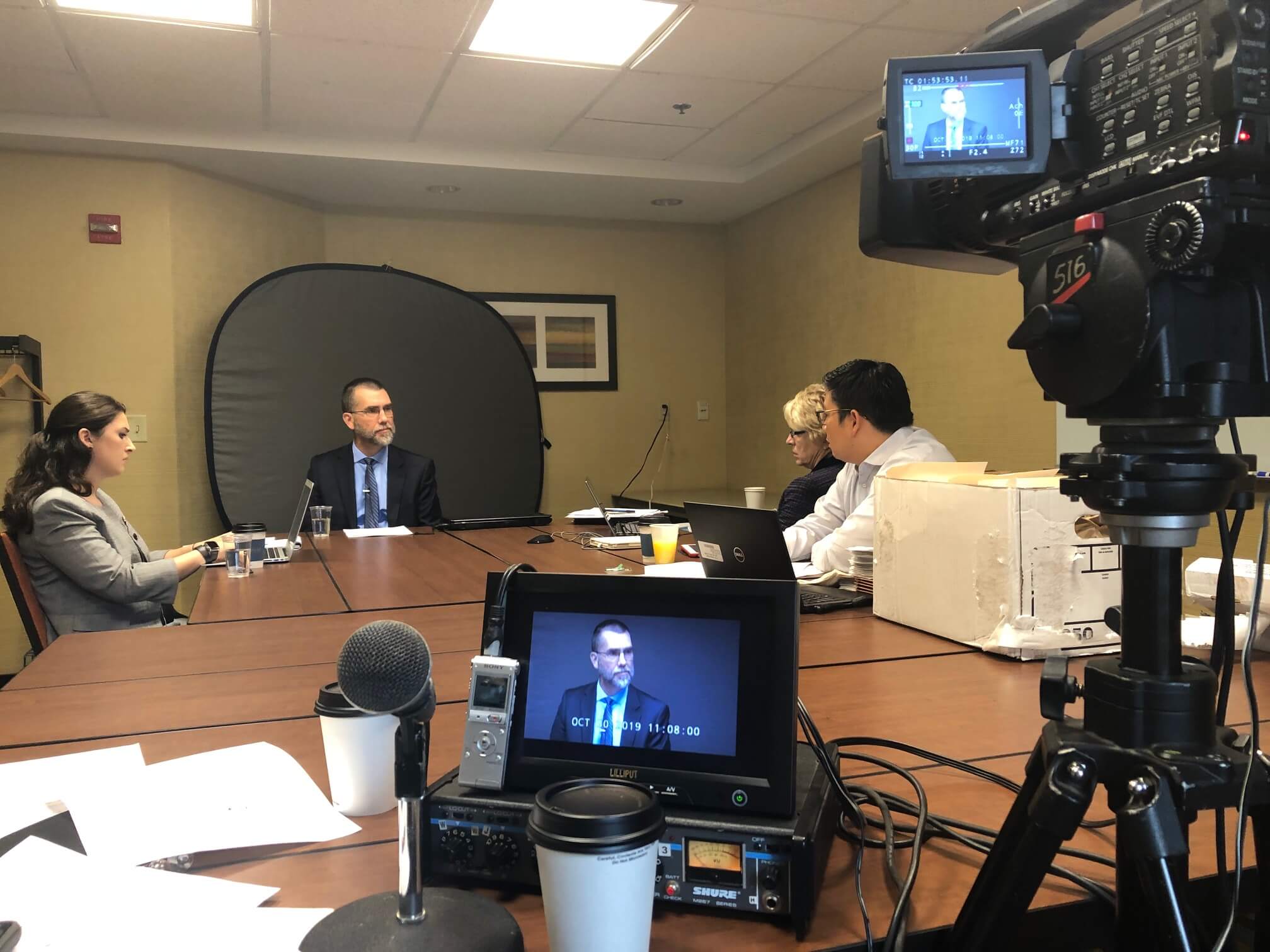The Ultimate Guide to Legal Videography for Attorneys and Legal Teams
The Ultimate Guide to Legal Videography for Attorneys and Legal Teams
Blog Article
Diving Into the Mechanisms of Lawful Videography: Unveiling Its Operation in Shielding Genuine Visual Statement for Judicial Process
In the world of judicial proceedings, the function of legal videography stands as a foundation in preserving and providing visual proof. As modern technology remains to advancement, the devices behind lawful videography have actually become progressively intricate, offering an essential layer of credibility to testaments recorded on video clip. By delving right into the functional complexities of lawful videography, one can reveal the meticulous procedures that secure the honesty of visual proof presented in courtrooms - Legal Videography. This expedition not just sheds light on the historical advancement of lawful videography yet likewise hints at the future trends that might further revolutionize how aesthetic statements are promoted in the world of justice.
Historical Development of Lawful Videography
Checking out the historic progression of lawful videography discloses a considerable makeover in the catching and discussion of visual proof within the lawful landscape. In the past, lawful proceedings heavily counted on composed photos and transcripts to record events and provide evidence. Nonetheless, with the development of video clip modern technology, the lawful industry experienced a paradigm shift in exactly how visual testament was recorded and offered.
The advancement of lawful videography can be mapped back to the late 20th century when advancements in video recording equipment made it much more available for use in court rooms. This technological innovation not only enhanced the accuracy and dependability of visual evidence yet likewise transformed the way instances existed to juries and courts (Legal Videography). Attorneys started to acknowledge the influential power of video recordings in communicating emotions, nuances, and non-verbal hints that created photographs or records alone could not capture properly

Innovation Developments in Video Documents
What essential technical advancements have revolutionized video clip paperwork in the legal field? The lawful area has actually seen significant innovations in video documentation innovation that have boosted the credibility and reliability of aesthetic proof in judicial proceedings.
Additionally, innovations in video clip file encryption and watermarking modern technologies have strengthened the safety and tamper-proof nature of video clip proof, protecting it versus unauthorized changes or meddling. The advent of cloud storage space options and remote access abilities has streamlined the storage space, retrieval, and sharing of video clip evidence, promoting seamless partnership amongst legal experts and guaranteeing reliable access to vital visual testaments when required. These technological advancements in video documentation have actually certainly changed the legal area, improving the precision, trustworthiness, and admissibility of visual evidence in judicial process.
Function of Legal Videographers in Court Room Setups
The advancement of video documents innovation in the legal area has necessitated an essential role for legal videographers in court setups, making sure the stability and reliability of visual testaments provided during judicial proceedings. Legal videographers play a webpage fundamental function in capturing and protecting precise visual evidence that can be crucial in litigation. Their responsibility expands to establishing up devices, videotaping process, and creating high-quality videos that properly reflect the events in the courtroom.
In court room settings, legal videographers have to stick to stringent standards and requirements to preserve the authenticity of the visual document. They should possess a keen eye for detail and a detailed understanding of legal treatments to make sure that the video footage they record is a true depiction of the events that took place. Additionally, lawful videographers typically function closely with legal groups to ensure that the video evidence lines up with the situation's demands and can be properly provided in court to sustain the lawful debates being made. Overall, the duty of legal videographers in court room setups is essential in promoting the concepts of justice and ensuring the openness of legal proceedings.

Ensuring Admissibility and Integrity of Video Clip Evidence
To preserve the credibility of visual proof offered in lawful procedures, making certain the admissibility and stability of video clip proof is a crucial responsibility for lawful videographers. Admissibility refers to the acceptance of evidence by the court, and for video evidence to be acceptable, it needs to fulfill particular requirements. Legal videographers play a vital role in ensuring that the video clips they capture adhere to the guidelines of proof, such as credibility, significance, and dependability.
Stability of video clip evidence entails keeping the creativity and precision of the video from the moment it is taped until it exists in court. This consists of securely keeping the video data, documenting the chain of wardship, and preventing any type of tampering or alterations. Lawful videographers should follow stringent protocols to ensure the honesty of the video proof and stop any challenges to its credibility.
Future Trends in Legal Videography
Given the raising reliance on technology in legal process, legal videographers are poised to welcome ingenious improvements shaping the future of visual statement capture and discussion. Among the prominent trends coming up is the integration of online truth (VR) and augmented reality (AR) innovations right into lawful videography. These technologies have the possible to reinvent how aesthetic evidence exists in courtrooms, permitting discretionary to immerse themselves in the scene of the criminal offense or occurrence.
In addition, making use of artificial intelligence (AI) formulas for video analysis is expected to enhance the process of reviewing and analyzing large amounts of video clip footage. AI can assist in recognizing crucial moments, abnormalities, and patterns within video clips, improving the efficiency of lawful investigations.

Final Thought
To conclude, legal videography has played a critical role in supplying authentic visual proof for judicial procedures. Through technological improvements and the proficiency of lawful videographers, the stability and admissibility of video evidence are made certain in court room settings. As lawful videography remains to advance, it will be vital to maintain standards that keep the accuracy and reliability of aesthetic testimony for the future of legal procedures.
Analyzing the historical progression of legal videography exposes a substantial transformation in the capturing and discussion of aesthetic proof within the legal landscape.The advancement of video clip documents technology in the lawful area has actually demanded a crucial duty for legal videographers in courtroom settings, making certain the integrity and dependability of aesthetic statements provided throughout judicial procedures. Furthermore, lawful videographers commonly function carefully with lawful teams to ensure that the video proof lines up with the situation's requirements and can be efficiently provided in court to sustain the legal arguments being made.To preserve the trustworthiness of visual proof offered in legal procedures, making sure the admissibility and honesty of video evidence is a critical obligation for legal videographers. As legal videography continues to evolve, it will certainly be essential to support criteria that maintain the accuracy and dependability of aesthetic testimony for the future of lawful process.
Report this page